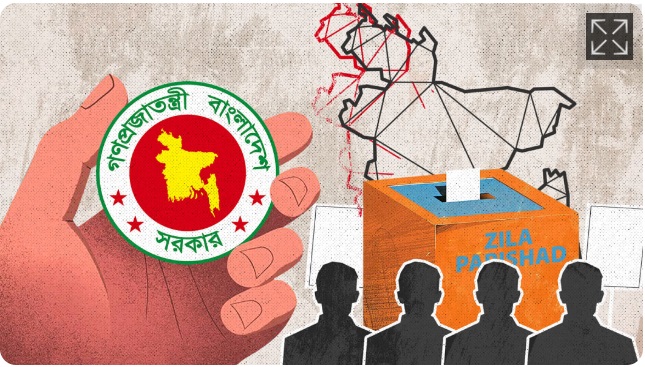How zila parishad can be an effective local government body
Nawshad Ahmed | Source : The Daily Star, 26 February 2025

Established as a local government body in the Indian subcontinent by the British rulers in 1885, zila parishads (district councils) have not functioned as an ideal democratic institution over the last five decades. In post-independence Bangladesh, zila parishads were formed under the Local Government Ordinance, 1976, but elections were not held. Between 1988 and 1990, zila parishads functioned briefly under appointed chairpersons who were mostly MPs from the ruling party, who enjoyed the status of deputy ministers. In the 1990s, zila parishads existed only in name as a local body, with a few officials and staff working without elected representatives.
Since the Zila Parishad Act was passed in 2000, the government, after more than a decade, appointed administrators in 61 districts, except the three hill districts, for the first time in December 2011. In 2016, elections were held in the zila parishads except in the hill districts, followed by the latest elections of the parishads in 2022. Unfortunately, tokenism became the norm in every regime when it came to the question of zila parishads being a stratum of local government, and none of the governments in Bangladesh genuinely considered it as a viable local government institution.
According to recent media reports, the Local Government Reform Commission, constituted on November 18, 2024 by the interim government, has recommended forming strong zila parishads through direct voting, instead of the present system of indirect elections. In the first week of February, the Public Administration Reform Commission, in its recommendations, proposed the abolition of zila parishads, but the Local Government Reform Commission suggested the opposite. The latter recommended that zila parishads should take up the primary role of planning, while upazila and union parishads should undertake implementation of said plans.
The Local Government Reform Commission is yet to submit its full report; it submitted only a summary of its recommendations to the interim government earlier this month. It includes a total of 210 recommendations in 14 areas. The commission recommended a strong local government system for the country and proposed that zila parishads be formed via direct elections, instead of the current practice of elections by upazila parishad, union parishad, and municipality members.
As per law, the zila parishad is supposed to undertake wide-ranging functions, such as: developing infrastructure that includes constructing roads, bridges, culverts, and other rural transport networks; providing social services such as building hospitals, dispensaries, schools, and other educational institutions; building health and sanitation facilities, arranging drinking water, and building rest houses; coordinating activities of union parishads within the district; promoting rural employment and empowerment of women; developing social, educational and religious institutions; and ensuring maintenance of rural bridges, tanks, ghats, wells, canals, and drains.
In order to carry out the above-mentioned functions, the roles of zila parishad chairperson and members, officers and employees are crucial, but at the same time, it is essential to demarcate the roles of the district administration and give enough scope and allocate adequate funding to the local bodies. As per the administrative structure of Bangladesh, the Ministry of Local Government, Rural Development and Cooperatives oversees the operation of 61 zila parishads. The Ministry of Chittagong Hill Tract (CHT) Affairs, on the other hand, oversees the work of the three hill districts. The capacity of these two ministries also needs to be enhanced, and permanent cells should be established within these ministries to strengthen regular monitoring and supervision, and to provide guidance on planning, budget formulation, project
The Local Government Reform Commission's recommendation to give zila parishads a stronger planning function makes sense. The commission suggested that zila parishads formulate local plans in line with the national plans. Adequate resources should be made available to the parishads for planning and development functions. These responsibilities will require the parishads to reorganise its manpower, which the government needs to approve. It is necessary to allocate sufficient funds to zila parishads so that they can become a viable local government entity and play a significant role in ensuring growth and planned development of their respective areas.
There have been no genuine local-level planning efforts in the country except some pilot exercises undertaken in selected districts in the past. If the recommendation of the commission is accepted, a new participatory planning mechanism will be possible in Bangladesh, and together with stronger monitoring, supervision and evaluation roles added to the zila parishads' functions, a qualitative change in project implementation is likely to be possible in the country. This will have a positive effect on the local economy and the well-being of local people.